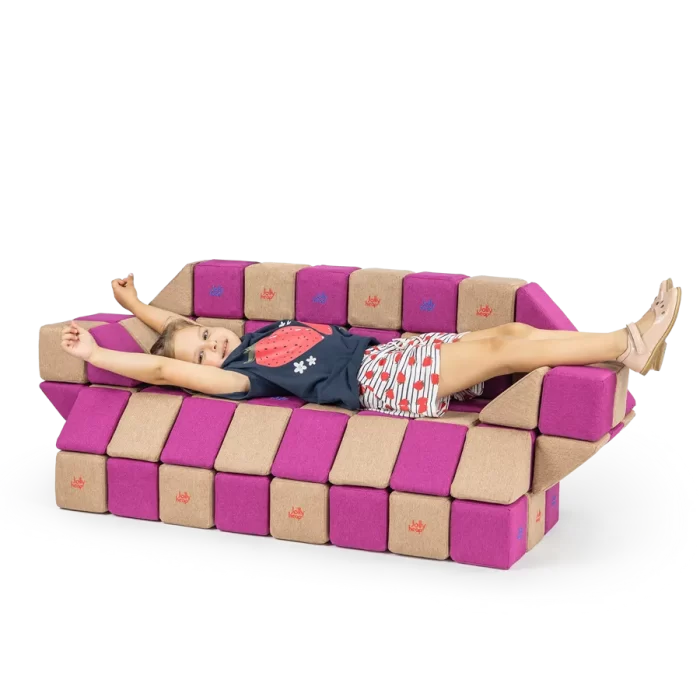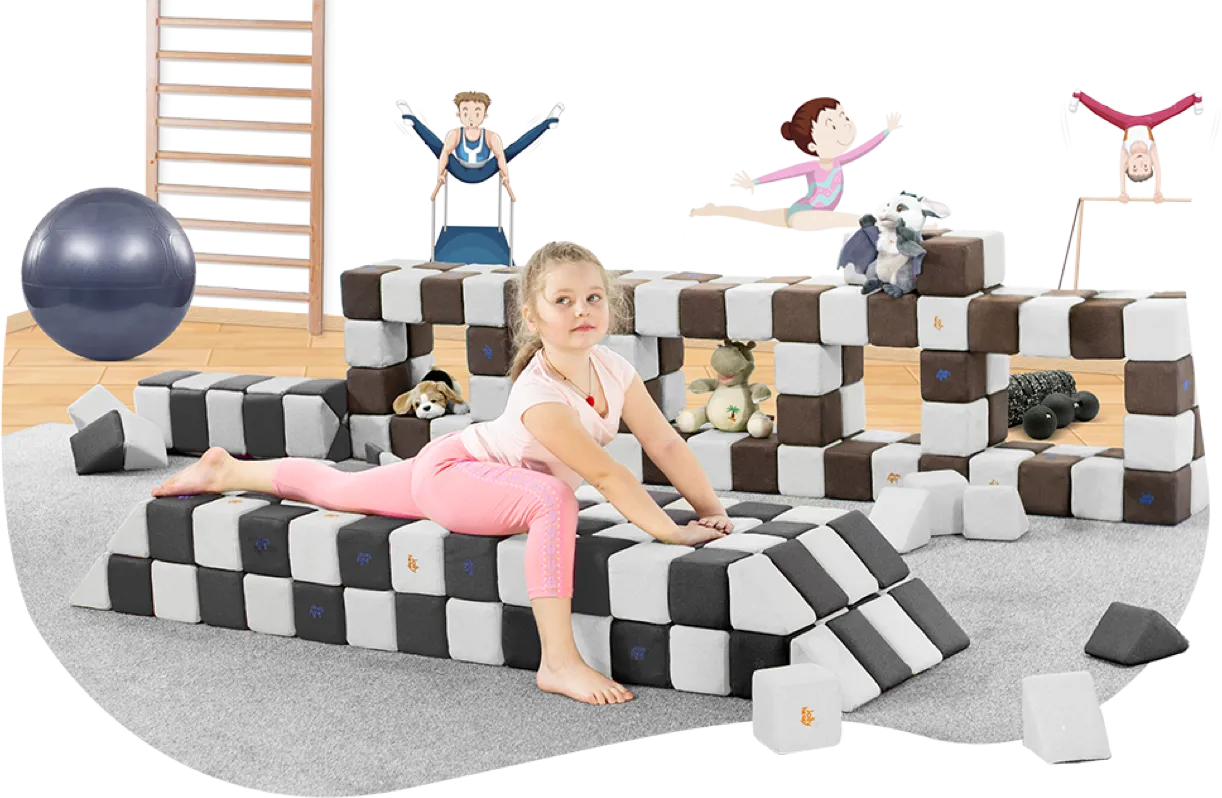
JollyHeap Blocks in Therapy and Rehabilitation
JollyHeap construction sets allow for the free building of various exercise objects.
With them, you can divert the attention of those under your care from their tasks, turning duty into curiosity and engagement.
Why JollyHeap blocks?
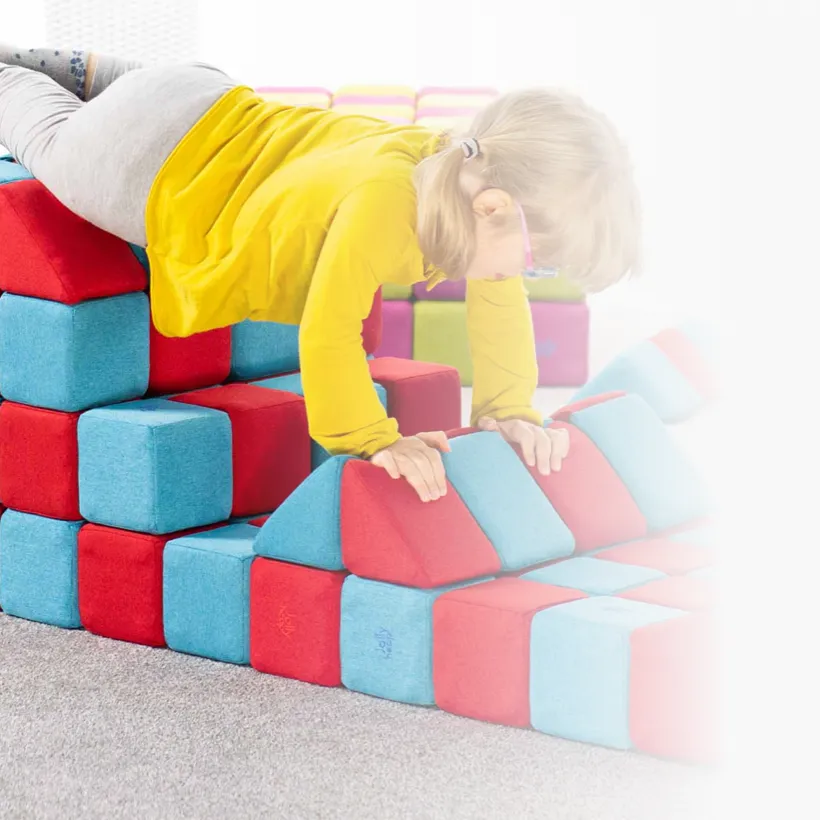
Soft and safe
The blocks are filled with soft foam, allowing for safe falls during exercises.
Children can tackle the most challenging tasks without worry.
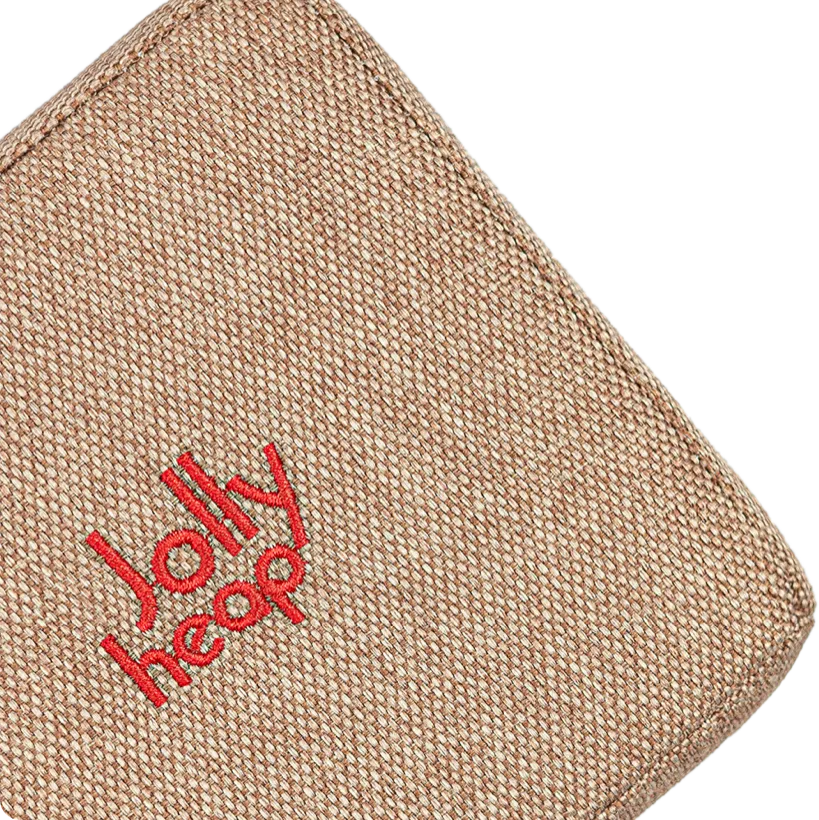
Pleasant to touch
The blocks are covered with soft fabric, providing incredibly pleasant sensory experiences.

Silent
During exercises and play, the blocks make no sounds, allowing you to work with those sensitive to noise.

Magnetic and stable
The blocks contain magnets, which are strong enough to sit, lie, or even stand on.
Where and how can I use them?
Physiotherapy
Speech therapy
Sensory Integration
Special Education
Intellectual Disability Education
One tool, thousands of possibilities
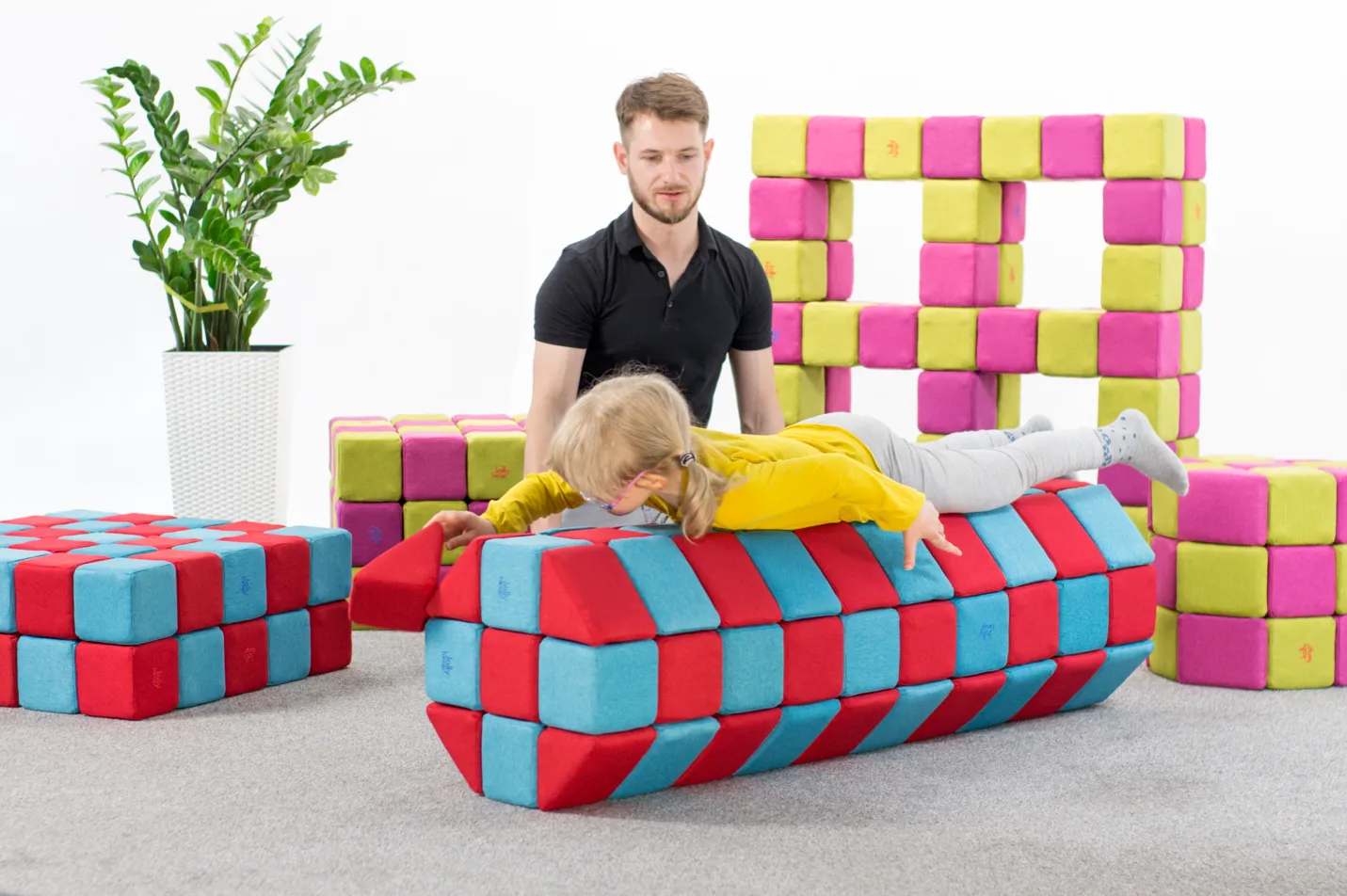
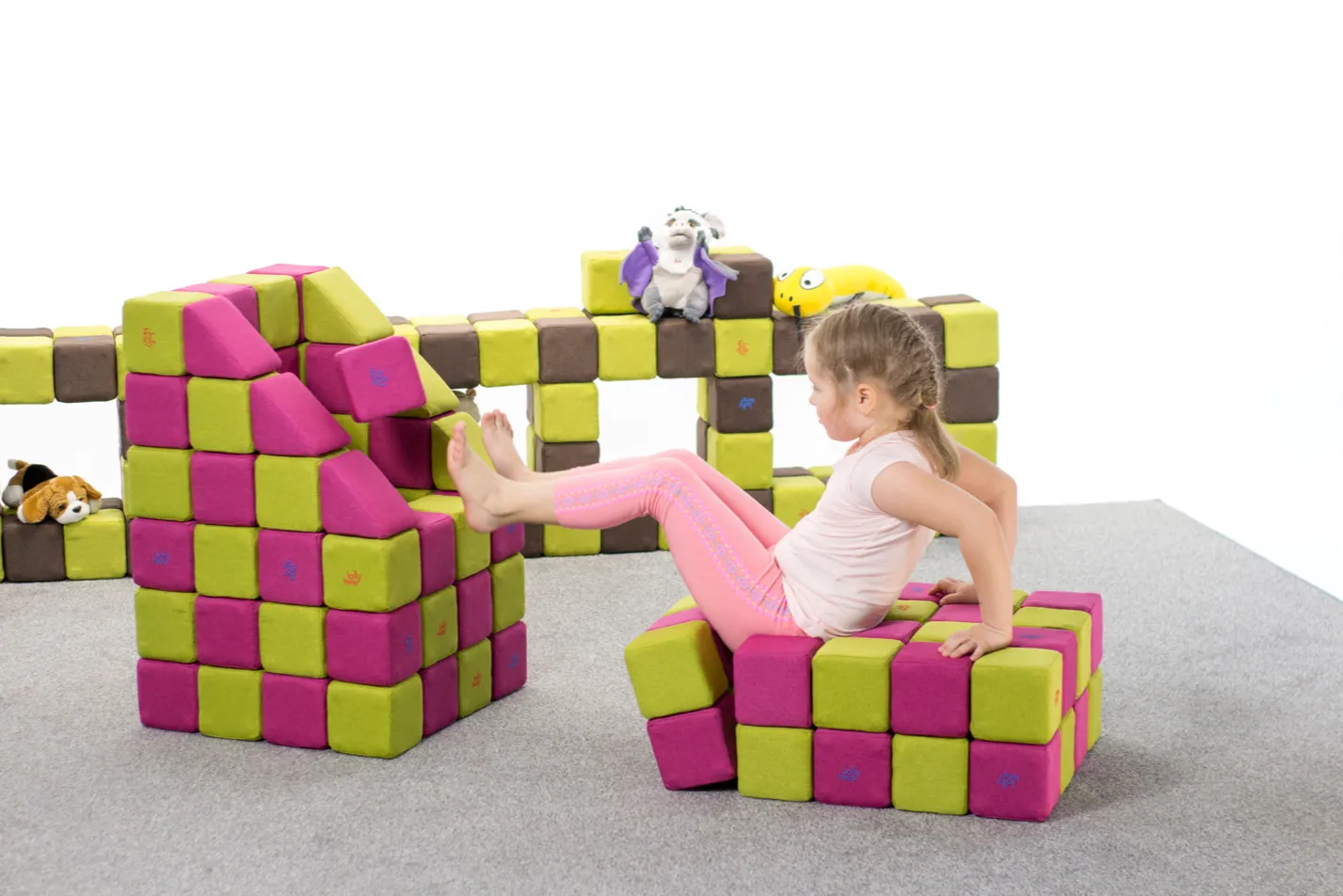

Children respond very enthusiastically to JollyHeap blocks, treating the challenging training as great fun. They are most often used in the therapy of children with intellectual disabilities because the blocks are pleasant to touch and soft and children have no fear of them. They are used as a mat, a table for physiotherapy, obstacle courses, balance training paths, coordination ladders, slides and ramps, weights, platforms of varying heights and even as a roller. Just building these objects with JollyHeap blocks develops sensory integration, coordination, concentration and the child’s attention.
Physiotherapist
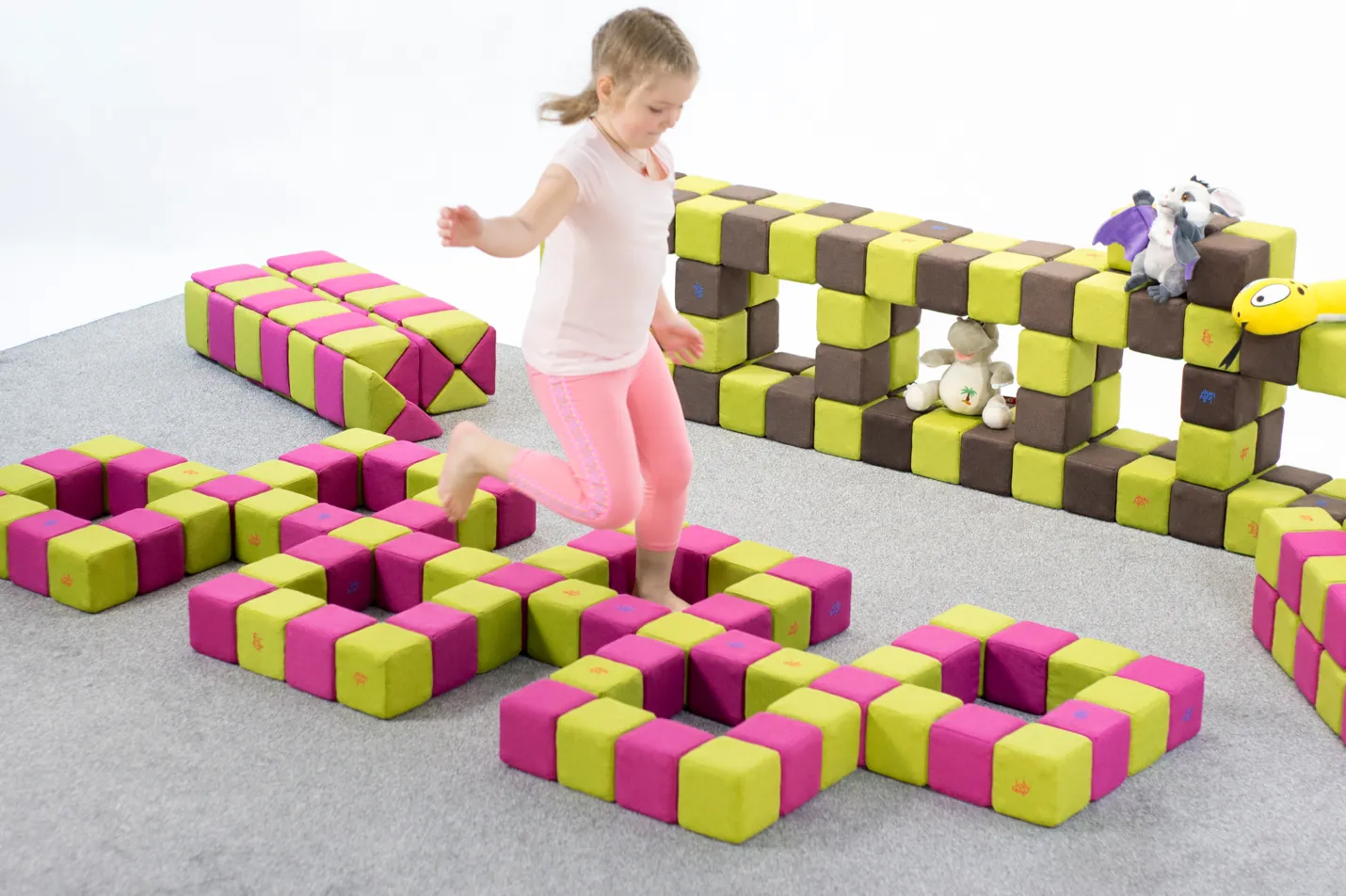
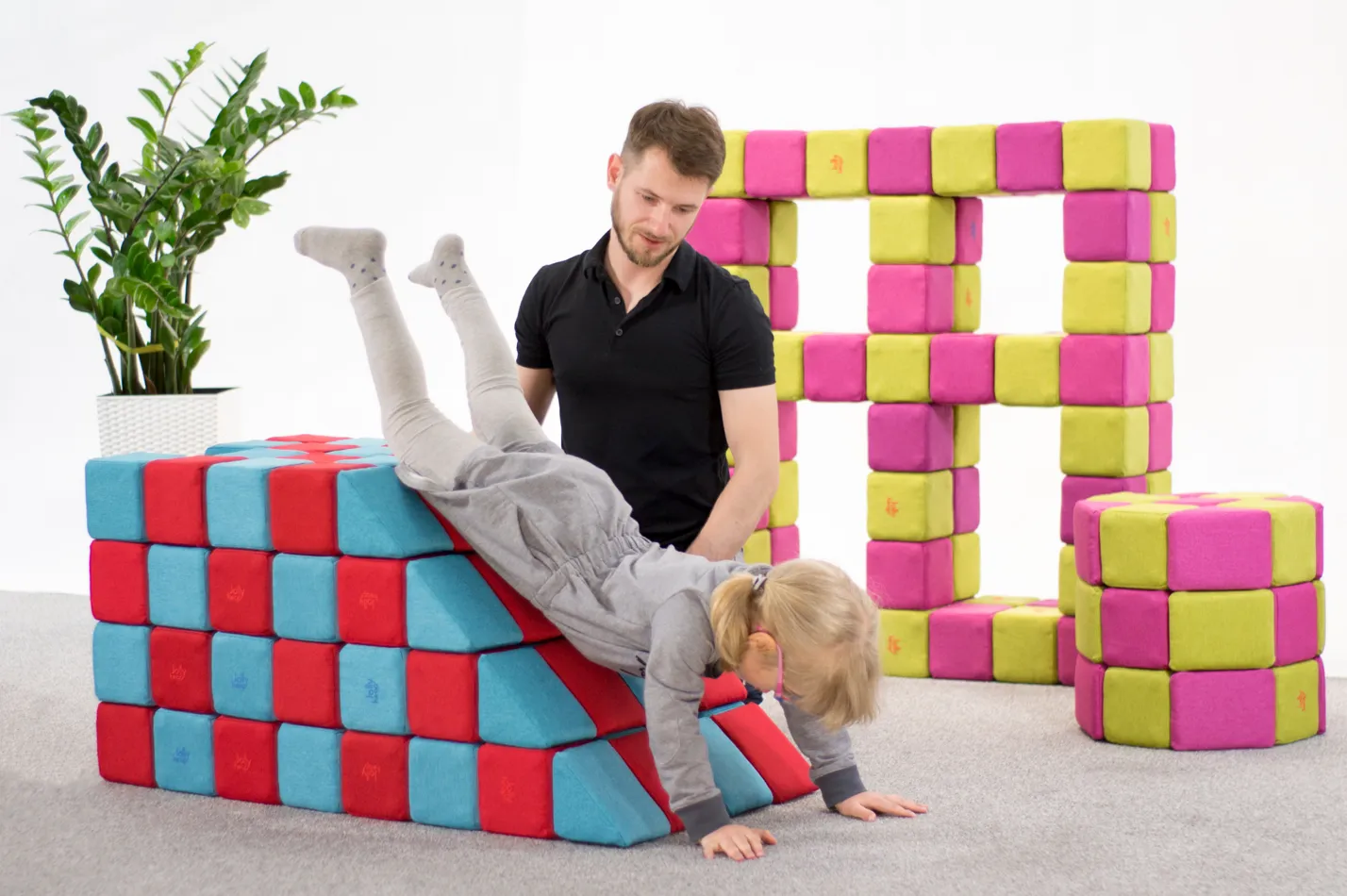
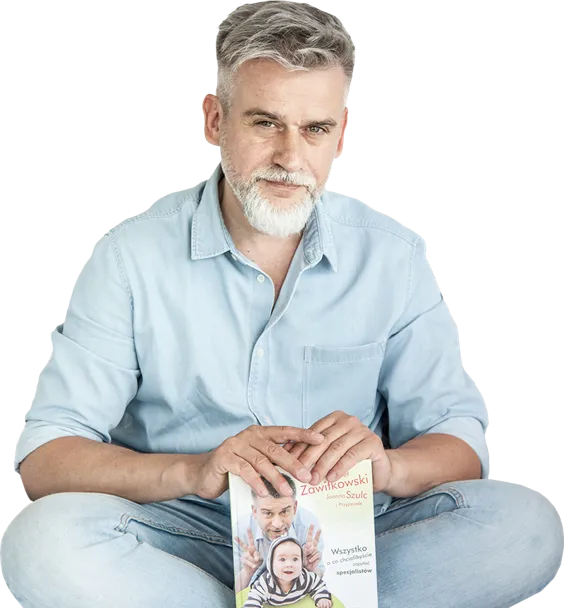
JollyHeap Blocks, with their simple form and universal shapes, as well as ease of assembly and disassembly, provide the opportunity to modify the work, therapy, relaxation and play environment without time and space constraints – the entire child’s surroundings. By shaping appropriate planes, dimensions and shapes of structures, we can adapt them to the child’s individual limitations and dysfunctions. Even without special skills in the field of motor coordination and organization, the child, together with the teacher or therapist, can actively participate in organizing the space for play, learning, and therapy.
Physiotherapist, author of actions, books and films in the series: “Mum, Dad, what do you think?”
